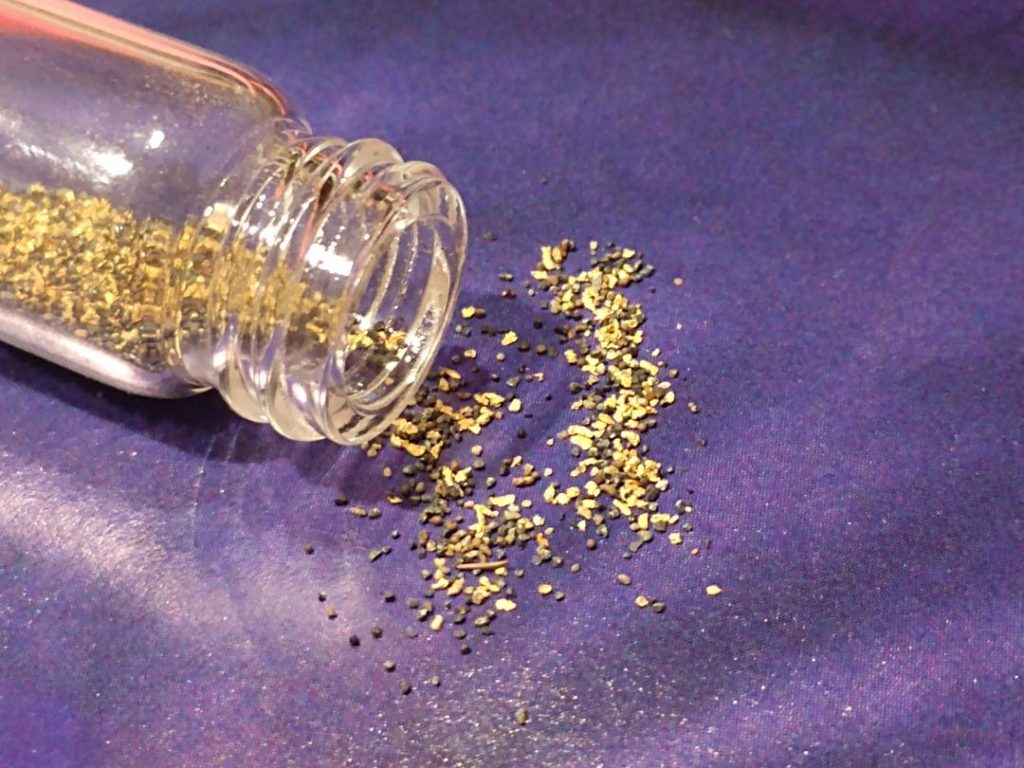
The region around Grand Junction is certainly not the richest gold mining area in the state. In fact, there is very little in the way of mining history in this region. Any amount of gold or silver that was recovered here was vastly overshadowed be the discoveries farther east.
Despite the lack of any serious mining efforts from commercial operations, there is indeed gold to be found here. Colorado’s richest gold districts are located 100 to 200 miles to the east, but some of those areas drain into the mighty Colorado River that will eventually make its way right through Grand Junction.
Of course, you shouldn’t expect to find large gold here. Being so far from the major mining districts of the Rocky Mountains, the only gold that really makes it this far downstream is extra-fine gold dust. This is the type of tiny gold that takes thousands of pieces to accumulate into anything even remotely profitable. In other words, don’t expect to get rich.
Yet there are still a few places where a hard working gold panner can find some decent “color” if you put in the time.
*Do your due-diligence before you head out. Rules and regulations can change and this information many not be up to date. It’s always wise to check with the appropriate land management agency before doing and digging.
East Elk Creek
Some historic gold mining took place on Elk Creek, northeast of Rifle. This is a tributary that flows into the Colorado River at New Castle. The lower end of the creek is all private land, but as you head north and gain elevation you will eventually enter Forest Service land.
The biggest mine near East Elk Creek was called the Gray Eagle Mine. This lode mine had several tunnels that went as far as 275 feet in depth. I could not find production numbers, but overall gold output likely wasn’t too much. This lode may be responsible for some of the gold that is found throughout the creek.
Island Acres Access
About 20 miles up the highway east of Grand Junction is a decent access for gold panners called the James M. Robb Colorado River State Park. This gives you about 1 mile of river access where you can seek out gold. The park is located along a big bend in the river and will produce some fine gold all throughout. Just keep in mind, you will need to use fine gold recovery techniques here. Gold in the 100-200 mesh range is common. It’s tiny stuff.

Connected Lakes Access
Right in Grand Junction is a nice access where you can pan for gold. It about 3 miles downstream of the confluence of the Colorado River and Gunnison River. You’ve got about 2 miles of riverbank to explore here. Remember this is a state park, so don’t get too carried with your digging. As you should with all areas, leave the area just as you found it.
Snooks Bottom Access
Another good access to the banks of the Colorado River is at Snooks Bottom, about 15 miles northwest of Grand Junction at the town of Fruita. You can access both sides of the river here, so there’s no shortage of places to prospect. You’ll find some gold here, but just as the other sites this far down the Colorado River, you can expect it to be super fine.
Plenty of Access, A Little Gold
There are plenty of other public accesses along the river in the areas around Rifle and Grand Junction. Most public accesses will allow prospecting, but make sure you are following the regulations. Stay out of the wildlife areas. Certain areas on federal land will allow for motorized equipment, but not in the state access sites. In general, try to stay clear of all the other land users and don’t dig in silly spots.
14 of Colorado’s Best Mining Towns
Gold Panning in Ouray & Telluride
Colorado’s Smuggler Mine & a Historic Gold Discovery
